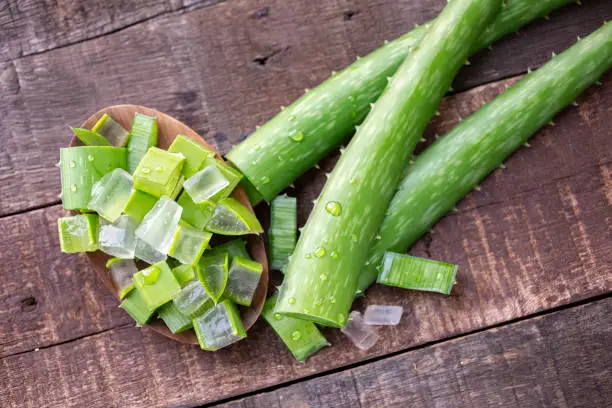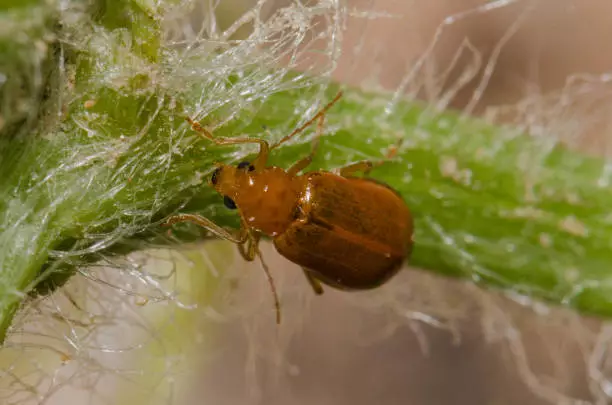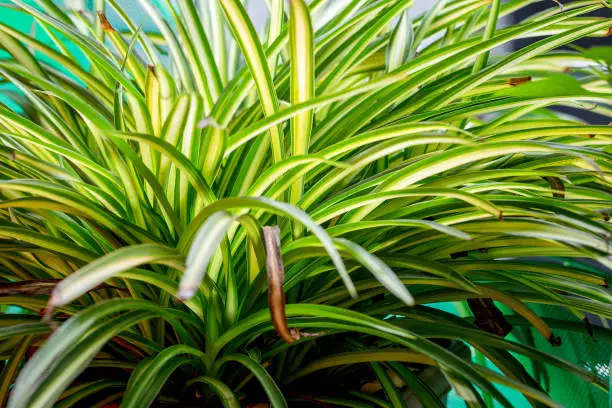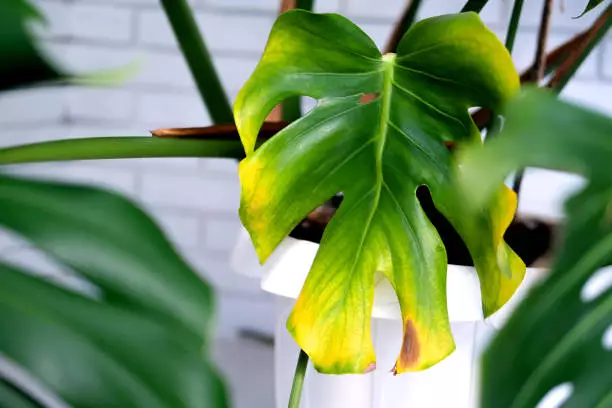Thriving termite colonies can be very difficult to manage. Their destruction of property often results in costly repairs. Although you can control them yourself, accessing the materials necessary for the project may not be easy. At the slightest notice of the telltale termite signs, it is advisable to call a licensed and reputable termite control professional.
A pest control company will help you establish the extent of the termite colony not just in the mulch but on your property. While some termites thrive above the ground, others are subterranean. Most often, the temperature and moisture generated by mulch encourage termite infestation. Mulch allows them access to cellulose nutrition from dead wood in your compound.
It is recommended to apply mulch 8 to 12 inches away from a building to reduce termite attacks on your home structures. Although you can use organic and inorganic pesticides to deter termites, avoid spraying every insecticide into your mulch. Some will kill the beneficial organisms in the mulch, thereby affecting your soil health.
Does mulch cause termites?
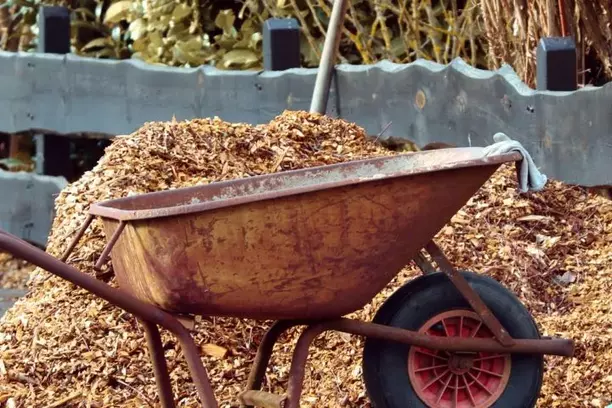
Many people have complained of termite infestation after introducing mulch to their compounds. Some even allege that the termites came alongside the bags of mulch purchased from the store. However, several sources say otherwise. According to the University of Florida, IFAS Extension, termites separated from their colonies die quickly.
Secondly, it is difficult to imagine termites escaping the industrial mulch chipping process. IFAS Extension suggests that termites work efficiently in colonies. Once separated from their colonies, their survivorship declines significantly.
Pest control experts report that even 100 termites separated from their underground colonies cannot thrive in your yard. If they do not die, predators like ants will finish them off in less than 24 hours. But assuming you notice termites in the bag of mulch purchased from the store, you can return the mulch for a replacement or spread it in the sun.
Termites are very fragile, and direct exposure to sunlight desiccates and kills them. That is why they like areas with mulch. It is not that mulch causes termites, but the mulch increases their ability to survive on your property if they are already present underground. Mulch invites and provides them with the best conditions to start and develop colonies in your house.
Why are there termites in mulch?
Termites are there in mulch because they already pre-existed in your yard.
Mulch moderates the soil temperature and holds moisture near the soil surface. Although that is beneficial for plants in many ways, a thick layer of mulch (over three inches) may keep the soil moist for longer. When the temperatures rise from about 75°F to 95°F, especially during winter and fall, termites will find shelter and make a home in the mulch.
Mulch provides the conditions necessary for termites to form colonies and survive. If termites are common in your area, you can purchase termite membrane barriers or sealant materials online or in your local agro shop. Placing the mulch on top of these barriers will prevent the upward movement of termites through the soil to the mulch and transfer poison back to their colonies.
Signs of termites in mulch
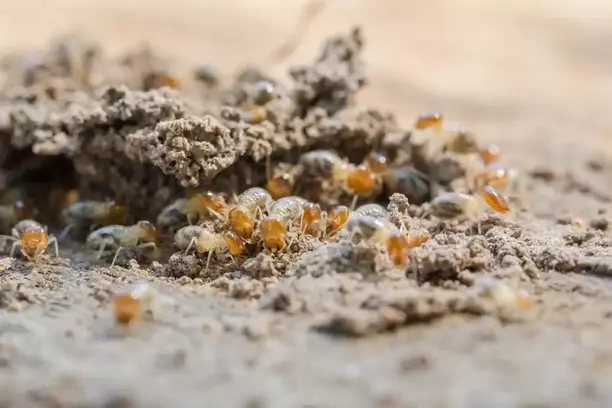
Solitary termites can be difficult to spot in mulch. You will probably find the workers and the swarmers if you dig a portion of the mulch near your structure.
Here are some signs of termites in mulch;
- Built mounds in the mulch: Mounds show that the termites are many and that their colony is not far beneath the soil surface. Termites will build mounds in mulch very quickly when it’s constantly moist or when you stack the mulch too high that they cannot get in contact with the termiticide-treated foundation.
- Dry wood hollowed along the grain: Termites like dry wood instead of living plants because these have a lot of cellulose. If you have mulch around your fences and trees, check for hollowed barks and whether or not the woods are treated for termites. Sometimes these pests can locate crevices and make holes in places where the termiticides did not reach during the wood treatment.
- Holes in and around the mulch: Subterranean termites move between the surface and underground through tunnels. These tunnels may be exposed on the surface as holes in and around the mulch, which they use to transport their food and escape from predators and unfavorable conditions.
- Reduction in the overall size of the mulch: Mulch from plant materials is made of 90% wood. Dry wood is rich in cellulose, the leading food for termites. If the mulch is not treated against pests, the termites can break them down quickly. Although water can be responsible for reducing the overall size of the mulch, an abnormal reduction of the biomass might be caused by termites.
- Shed termite wings: After retreating from the cold or hot sun, they leave behind significant evidence of their presence. You can easily identify intense termite activities on your property by the shed termite wings. This should be of great concern because it signals the start of a new termite colony.
- Small mudded tubes or tunnels: The mud tubes constructed by termites are usually earthy brown. The tubes range between 0.5 and 2.5 in diameter. By the time you come across these fragile mud tubes, the termites have probably abandoned them. However, that does not mean the termites are gone. They have just moved to another area to find food.
- Swarm of termites: A swarm of termites also shows that they have found a home in your mulch. You may notice two kinds of termites: the workers and swarmers. Workers are pale yellow, and swarmers are black insects. You can identify the worker termites with their two antenna and the swarmers with their long white wings.
How to treat termites in mulch
There are several ways you can treat termites in mulch. You can use direct chemical treatments, liquid termiticides, and baits.
Apply insecticides
Spray the mulch with a liquid termite treatment like Taurus SC or Bifen XTS and turn the mulch until the termiticide is evenly distributed. These are fast-acting insecticides and will eliminate the termites in less than 90 days. In addition, their active ingredients (Fipronil and Bifenthrin) can last for between 90 days and ten years in your compound and will eliminate the entire termite colony.
However, confirm with the storekeeper that the pesticide you intend to use is not toxic to pets and that it will not destroy beneficial microbes in your soil.
Use termite traps
The best termite trap is the spectracide terminate. It is not only easy to install, but it will also last for up to one year. However, you should not use spectracide to terminate near ponds as it’s potentially toxic to aquatic animals. Like Bifenthrin, termites pick up the Hexaflumuron poison in the bait and bring it back to their colony.
Another recommended termite barrier is Termidor. It provides a chemical barrier against termites that will last for approximately eight years. You may need to purchase several packages of the baits, depending on the size of your home.
Keep a one-foot distance between mulch and wooden structures
Using mulch in your compound does not mean you will get termites. You are just increasing the risk. Mulch acts as a bridge for termites to get into wooden structures on your property. Therefore, it is recommended to maintain at least a one-foot distance between your home and the mulch. When opened, doors and window frames must not contact the mulch.
Good drainage around structural foundations
If water falls from the roof and collects around the house foundation and soaks the mulch, the chances of termite infestation are very high. The terrain around your structure should allow runoff from gutters and downspouts to flow away from the foundation and not towards it.
Natural treatments
There are several 100 percent natural treatments you can apply to control termites. For example, you can introduce nematodes to your mulch. Nematodes are microscopic easy-to-find organisms. Once you introduce them to the mulch, they will enter the termite’s body and release their toxic gut bacterium into its blood system.
Nematodes kill the termites slowly and will continue multiplying and keeping the termites at bay for a very long time.
Contact licensed pest controllers
If all DIY control measures fail, it is time to contact pest control professionals. Although termites can cause significant damage, they will not pull down your house overnight. Therefore, it is crucial to take your time and look for licensed and reputable pest control companies.
What kind of mulch attracts termites?
It is essential to know the kinds of mulch to avoid to reduce the risks of termite infestation in your yard.
Here are some mulch options that termites will invade as fast as they can;
- Cypress sapwood
- Slash pine
- Loblolly pine
- White birch
Although these kinds of mulch are conducive to hosting termites, you should avoid piling large pieces of wood or pressure-treated railroad ties in your compound. Whereas mulch increases the risks of termite infestation, it can provide a bridge for termites to your home more than mulch could do.
Best termite-resistant mulch options
Here are the best termite-resistant mulch options that will save you the termite hassle;
- California redwood
- Southern tidewater red cypress
- Eucalyptus
- Melaleuca
- Cypress heartwood
- Cedar
Mulching with materials like rubber and stones can also reduce the impact of termites.
